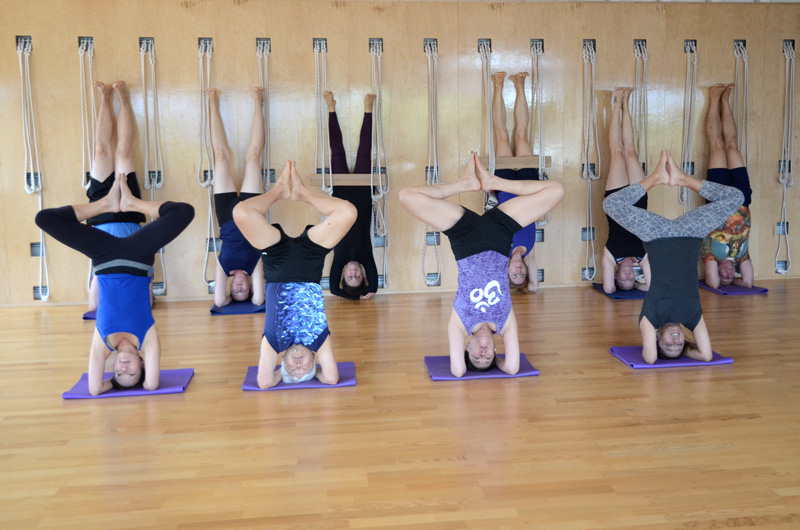ABOUT IYENGAR YOGA
Iyengar Yoga is based on the teachings of yoga master B.K.S. Iyengar.
Students begin by learning the art and science of asanas, or yoga postures. The method is progressive and the postures are adjusted to meet the needs of each student.
Benefits include:
Strength
Coordination
Flexibility
Increased sense of well being
Meditation in action, being focused and absorbed in the moment
The consistent practice of asana and pranayama (yogic breathing) will enhance your physical, emotional, and spiritual awareness.
Frequently Asked Questions about Iyengar Yoga
What is Iyengar Yoga?
Iyengar Yoga is based on the teachings of revered yoga master B.K.S. Iyengar (1918-2014), author of the classic yoga treatise “Light on Yoga”. His daughter, Geeta, and son, Prashant, are also accomplished teachers and authors of yoga texts. The Iyengar family’s teachings are deeply grounded in the yoga sutras of Patanjali, an ancient summation of the path of yoga considered to be at least 2500 years old. B.K.S. Iyengar’s intense practice and over 65 years of teaching have produced significant innovations in the teaching of this art.
Among the most noteworthy are:
A complete approach to physical, mental, emotional and spiritual transformation, bringing the practitioner to physical health and vitality, mental clarity and wisdom, and emotional serenity and poise.
Emphasis on standing poses to develop strength, stamina, concentration and body alignment.
A safe, orderly, systematic progression of poses to develop the student’s ability both within a class and from class to class.
Use of props, such as blankets, blocks and straps, to facilitate learning and adjust poses to an individual’s needs.
Highly developed teaching methodology including the precise use of language, demonstration and teaching of specific points of action in a pose, individual correction and adjustment of students.
Ways to use yoga to ease various ailments and stress.
Complete integration of the yoga philosophy with the practice of asana.
Who can do Iyengar Yoga?
Iyengar yoga is for all ages and abilities. You do not need to be physically fit to participate or to receive the benefits of practicing yoga.
The Iyengar Certification process is very rigorous, assuring you of a teacher well trained in the art of teaching yoga.
What is involved in Iyengar Teacher Certification?
The B.K.S. Iyengar Yoga National Association of the United Sates (IYNAUS):
is committed to study, teach, disseminate and promote the art, science and philosophy of B.K.S. Iyengar
is exclusively educational and charitable
oversees Teacher Training guidelines
holds annual Certification assessments
maintains a code of ethics for its teachers
After years as a student of yoga and with significant early teaching experience, candidates for assessment apply to take the exam. Given over the course of a weekend, prospective teachers must show proficiency in performance of the asanas or postures at their level and take a written exam on philosophy, anatomy, and practical knowledge of teaching. In the third and most important part of the test, the candidate is observed and assessed while teaching a sample class.
A student becomes an Introductory Iyengar Yoga Certified instructor after successfully passing the first assessment. There are six levels currently available for assessment, from introductory to intermediate senior. Higher levels have been granted directly from B.K.S. Iyengar.
After successful completion of this exam, the teacher is considered certified and may denote that with the official Iyengar Certification Mark.
The Association also produces a bi-annual newsletter, imports Iyengar yoga books, tapes, and CDs from India, and sponsors workshops and national conventions. It also maintains an archive of Iyengar yoga materials and a website with a national directory of certified teachers in the United States.


